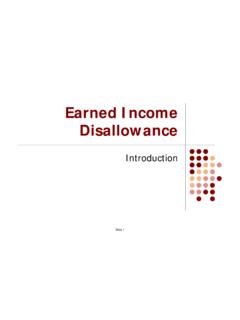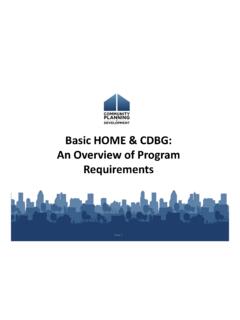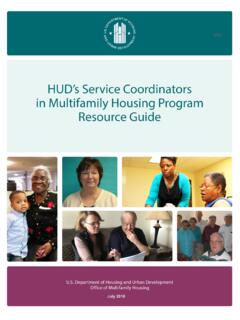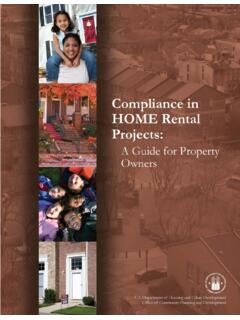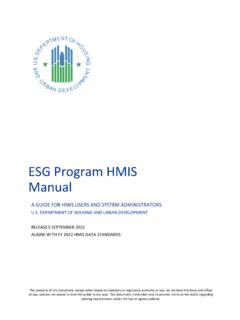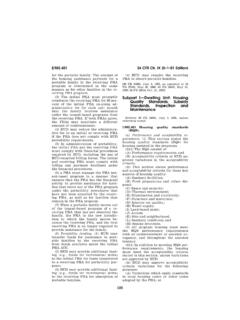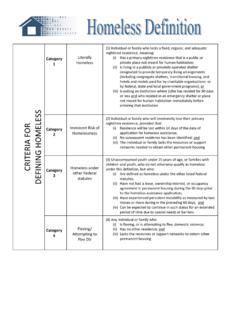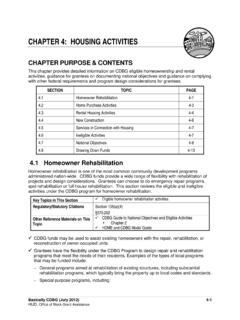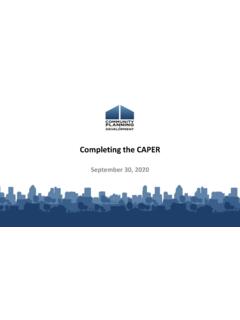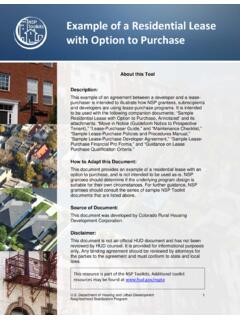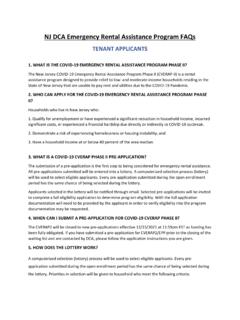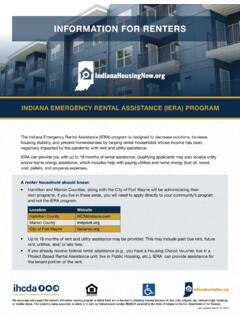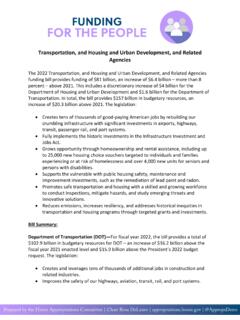Transcription of Rapid Re-Housing Brief - HUD Exchange
1 1 Rapid Re-Housing What is Rapid Re-Housing ? Rapid Re-Housing is an intervention, informed by a housing First approach that is a critical part of a community s effective homeless crisis response system. Rapid Re-Housing rapidly connects families and individuals experiencing homelessness to permanent housing through a tailored package of assistance that may include the use of time-limited financial assistance and targeted supportive services. Rapid Re-Housing programs help families and individuals living on the streets or in emergency shelters solve the practical and immediate challenges to obtaining permanent housing while reducing the amount of time they experience homelessness, avoiding a near-term return to homelessness, and linking to community resources that enable them to achieve housing stability in the long-term.
2 Rapid Re-Housing is an important component of a community s response to homelessness. A fundamental goal of Rapid Re-Housing is to reduce the amount of time a person is homeless. Rapid Re-Housing models were implemented across the country through the Homelessness Prevention and Rapid Re-Housing Program (HPRP), included as part of the American Reinvestment and Recovery Act (ARRA) of 2009. Through this national implementation experience, Rapid Re-Housing programs were found to be a highly successful and cost-effective way to end homelessness for a wide range of households experiencing homelessness.
3 The intervention model is premised on the following ideas: Although they may have many additional challenges and service needs, the majority of families and individuals experiencing homelessness become homeless due to a financial crisis or other crisis that leads to the loss of housing . Addressing homelessness for these households primarily entails addressing their housing barriers to help them return to permanent housing . Most families experiencing homelessness are not significantly different in characteristics from other poor families.
4 Most have had recent experience living in permanent housing , and can return and remain housed without long-term supportive services. This intervention focuses on identifying and building upon the strengths of families to maintain their own housing . Prolonged exposure to homelessness has a significant negative effect on adults and children the longer a household experiences homelessness, the poorer the outcomes will likely be in a variety of areas. Therefore, the length of time a household experiences homelessness should be minimized by helping them return to permanent housing as quickly as possible upon becoming homeless.
5 Households should be assisted to exit homelessness and obtain permanent housing as soon as possible rather than remain homeless while awaiting a vacancy in another program. Although access to affordable housing is an effective way to ensure long-term housing stability among households experiencing homelessness, affordable housing resources currently fall far short of the need. Short-term assistance - including financial assistance , housing search assistance , and targeted services - has shown tremendous promise in resolving the immediate crisis of homelessness for many families and preventing their future returns to homelessness.
6 Resources are limited and should be used most efficiently to ensure that assistance can be provided to the greatest number of people experiencing homelessness. An operating principle is that households should receive just enough assistance to successfully exit homelessness and avoid returning to the streets, other places not meant for human habitation, and emergency 2 shelters. Longer-term and more costly programs like permanent supportive housing should be reserved for those individuals and families who need this level of assistance to exit homelessness and remain housed.
7 Target Populations Rapid Re-Housing is an effective intervention for many different types of households experiencing homelessness, including those with no income, with disabilities, and with poor rental history. The majority of households experiencing homelessness are good candidates for Rapid Re-Housing . The only exceptions are households that can exit homelessness with little or no assistance , those who experience chronic homelessness and who need permanent supportive housing , and households who are seeking a therapeutic residential environment, including those recovering from addiction.
8 Rapid Re-Housing s Effectiveness Research suggests that Rapid Re-Housing is more cost-effective than transitional housing . The long-term impacts of Rapid Re-Housing are still being studied, but initial research indicates that people assisted by Rapid Re-Housing experience higher rates of permanent housing placement and similar or lower rates of return to homelessness after the assistance ends compared to those assisted by transitional housing or who only receive emergency shelter. In and of itself, Rapid Re-Housing is not designed to comprehensively address all of a recipient s service needs or their poverty.
9 Instead, Rapid Re-Housing solves the immediate crisis of homelessness, while connecting families or individuals with appropriate community resources to address other service needs. Core Program Components and Practice Considerations Rapid Re-Housing interventions assist households experiencing homelessness by helping them move directly into permanent housing in the community using whichever combination of financial assistance and housing -focused services are needed and desired by the household. Rapid Re-Housing has core programmatic components and practice considerations which are described below.
10 While a Rapid Re-Housing program must have all three core components available, it is not required that a single entity provide all three services nor that a household utilize them all. Core Program Components A Tailored Package of assistance To help households obtain permanent housing as quickly as possible, Rapid Re-Housing can draw from a variety of types of assistance and tailor this to households based on their specific strengths and barriers. Some households may only need limited financial assistance to cover rent and move-in costs, some may only need housing search assistance , while others may need a combination of assistance or assistance for a longer duration.
